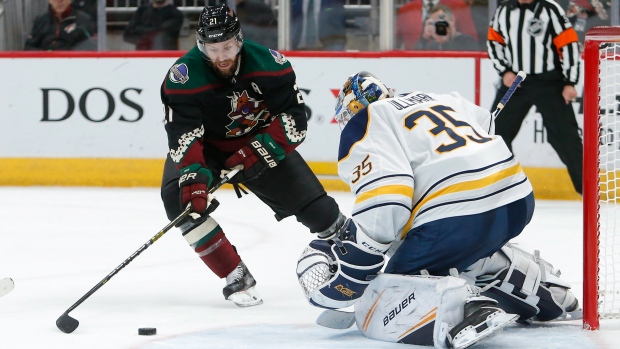Dec 28, 2021
Senators hoping Stepan rediscovers his offence in Ottawa
The Ottawa Senators acquired centre Derek Stepan from the Arizona Coyotes on Saturday in exchange for a 2021 second-round pick. Reading between the lines, it’s clear the organization is concerned about failing to insulate their younger players, opting to burn a future asset in order to bring a capable middle-six centre into the fold, Travis Yost writes.
By Travis Yost

The Ottawa Senators acquired centre Derek Stepan from the Arizona Coyotes on Saturday in exchange for a 2021 second-round pick.
The move is meant to bolster a shallow centre position – currently filled by the likes of Colin White, Chris Tierney, Josh Norris, and Logan Brown – on Ottawa’s active roster for the upcoming season. Stepan’s presence will block at least one Senators prospect, but it is hard to believe that wasn’t by design.
Reading between the lines, it’s clear the organization is concerned about failing to insulate their younger players, opting to burn a future asset in order to bring a capable middle-six centre into the fold.
From a salary cap perspective, it’s hard not to like this deal for the Senators. Stepan’s $6-million average annual value contract expires at the end of this season, which means his acquisition won’t block out Ottawa prospects long term. Stepan could even play himself into an extension on merit – some of these Senators prospects will inevitably flame out, and opportunities for productive veterans to grab roster spots are going to be there for the taking.
Alternatively, if Ottawa sees an opportunity to move Stepan at the trade deadline to a contender, they will likely be able to recoup the second-round pick or something similar in value.
Perhaps most importantly for Ottawa, Stepan’s cap liability is much higher than his cash liability. The Senators will only pay his base salary of $2-million over the course of the season thanks to pre-paid signing bonuses.
From a hockey perspective, his value is less clear. Stepan has had a fantastic career, but he been a shell of his former self since being traded to the Coyotes in June of 2017. Most of Stepan’s regression has come on the offensive side of the ice, where his individual rate scoring and on-ice scoring have cratered:


Years ago on Broadway, Stepan was part of a blistering offence that generated dangerous attacking sequences at will – particularly off the rush. Speedy wingers always seemed to complement Stepan’s game the best. Players like Marian Gaborik, Carl Hagelin, and Chris Kreider were frequent recipients of Stepan’s passing and playmaking ability, and for a few seasons the Rangers housed one of the more dangerous lines in the league.
But Stepan’s offensive production has slowed. The Coyotes never quite seemed to figure out the right mix of forwards to play alongside Stepan, trying Clayton Keller, Vinnie Hinostroza, Lawson Crouse, Phil Kessel, and Richard Panik to varying degrees of success.
From a teammate quality perspective, it’s certainly been a step down from his heyday in New York. But it’s also a more realistic scenario of the type of forward quality Stepan will likely be playing with in Ottawa.
One thing that has become obvious about Stepan’s offensive struggles: his line has had a difficult time getting into the dangerous scoring areas of the ice. If you look at where Arizona generated shots with Stepan on the ice last year, you will notice the low and high slot are basically void of activity. Their offence tends to come from the circles and the perimeter, and scoring diminishes as a result:

Bringing it back to Ottawa’s lineup, it does raise the question as to whether a winger like Brady Tkachuk – one of the few proven commodities the Senators have, and one of the only players who has shown himself capable at creating offence from in tight – is best suited to play with Stepan.
There is only one Tkachuk to go around, but we have already seen what Stepan looks like when he doesn’t have speed options or interior playmakers on his wing – it’s third- and fourth-line offensive production for a forward with top-six intentions. Irrespective of whether or not the Senators decide to keep Stepan around longer-term, they will need more than that from a player of his calibre.
To that end, it’s now up to head coach D.J. Smith to find the right mix of teammates for his new 30-year-old centre.

